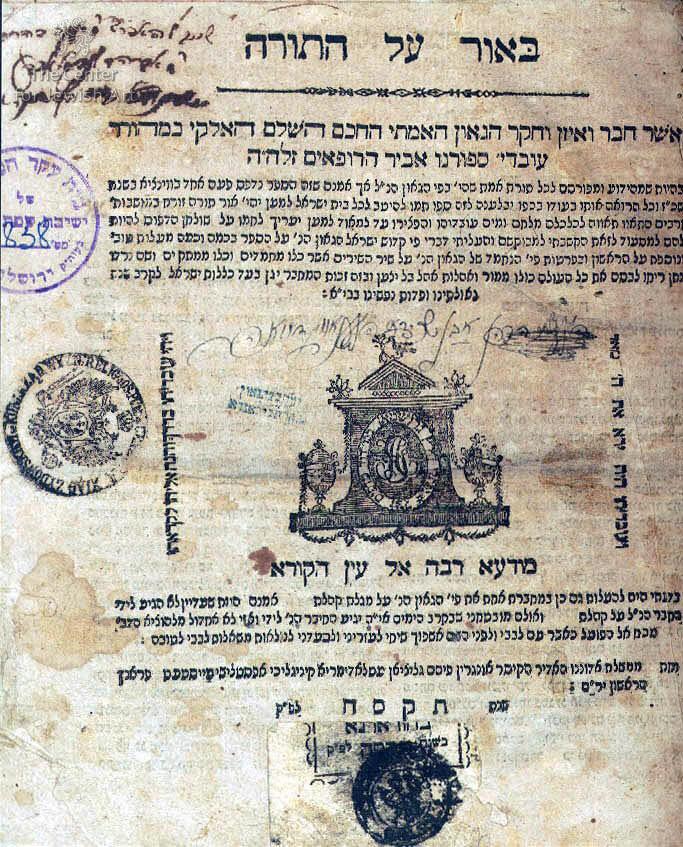Obj. ID: 36406 Biur al ha-Torah by Ovadiah ben Ya'akov Saporno, Lemberg, 1808

sub-set tree:
This text was prepared by William Gross:
Rabbi Ovadiah Sforno's famous commentary on the Torah.
Ovadia ben Jacob Sforno (c.1475-1550) was an Italian rabbi, Biblical commentator, philosopher and physician. After acquiring a thorough knowledge of Hebrew, rabbinic literature, mathematics, and philosophy, he went to Rome to study medicine. There his learning won for him a prominent place among scholars; and when Reuchlin was at Rome (1498-1500) and desired to perfect his knowledge of Hebrew literature, Cardinal Domenico Grimani advised him to apply to Obadiah.
Equally high was Obadiah's reputation as a casuist. Meïr Katzenellenbogen consulted him on legal questions and Joseph Colon invoked his authority. About 1525 Obadiah left Rome and led for some time a wandering life. Finally he settled at Bologna, where he founded a yeshiva which he conducted until his death.
Obadiah was an indefatigable writer, chiefly in the field of Biblical exegesis. The characteristic features of his exegetical work are respect for the literal meaning of the text and a reluctance to entertain mystical interpretations. He possessed excellent judgment in the selection of explanations from the earlier exegetes, as Rashi, Abraham ibn Ezra, the Rashbam, and Nahmanides, and he very often gives original interpretations which show an extensive philological knowledge.
The book's printer, Naftali Hertz Grossman, was the son of the famous female printer, Judith Rosanes (who was herself the great-grandaughter of the renowned printer Uri Phoebus). Although his mother ran her successful press in Lemberg, Naftali established his own printing house in that city beginning in 1797. Upon his death in 1827, Naftali's wife, Chave Grossman, continued running the press until 1849. When she died, the press was continued by her daughter Feige, who ran the business until at least 1857.
Grossman's mark (Ya'ari 194) shows a popularly-employed architectural monument flanked by urns and topped by a bird holding a branch in its beak. The oval cartouche in the center holds his monogram; his full name is within the frame around the oval.


